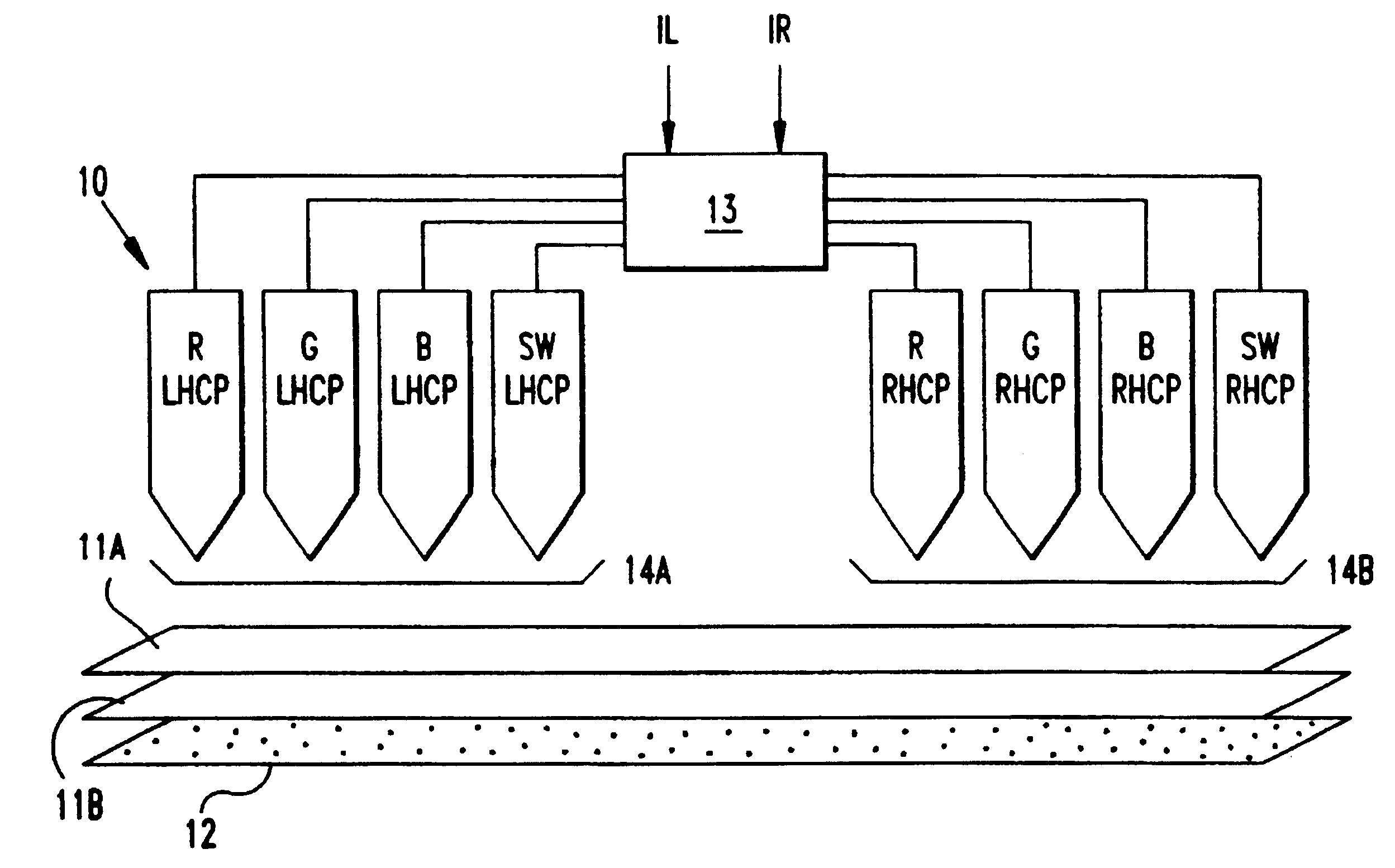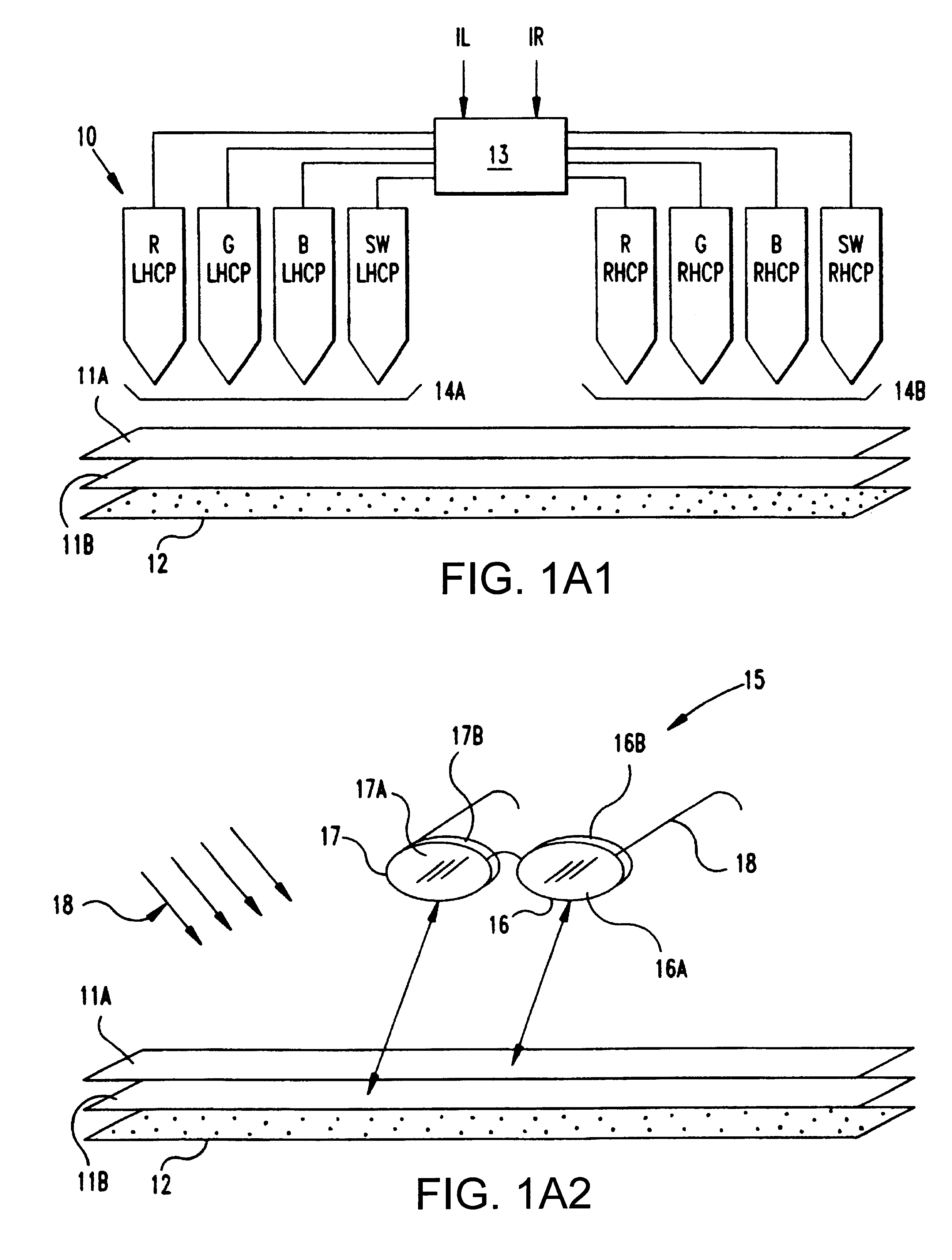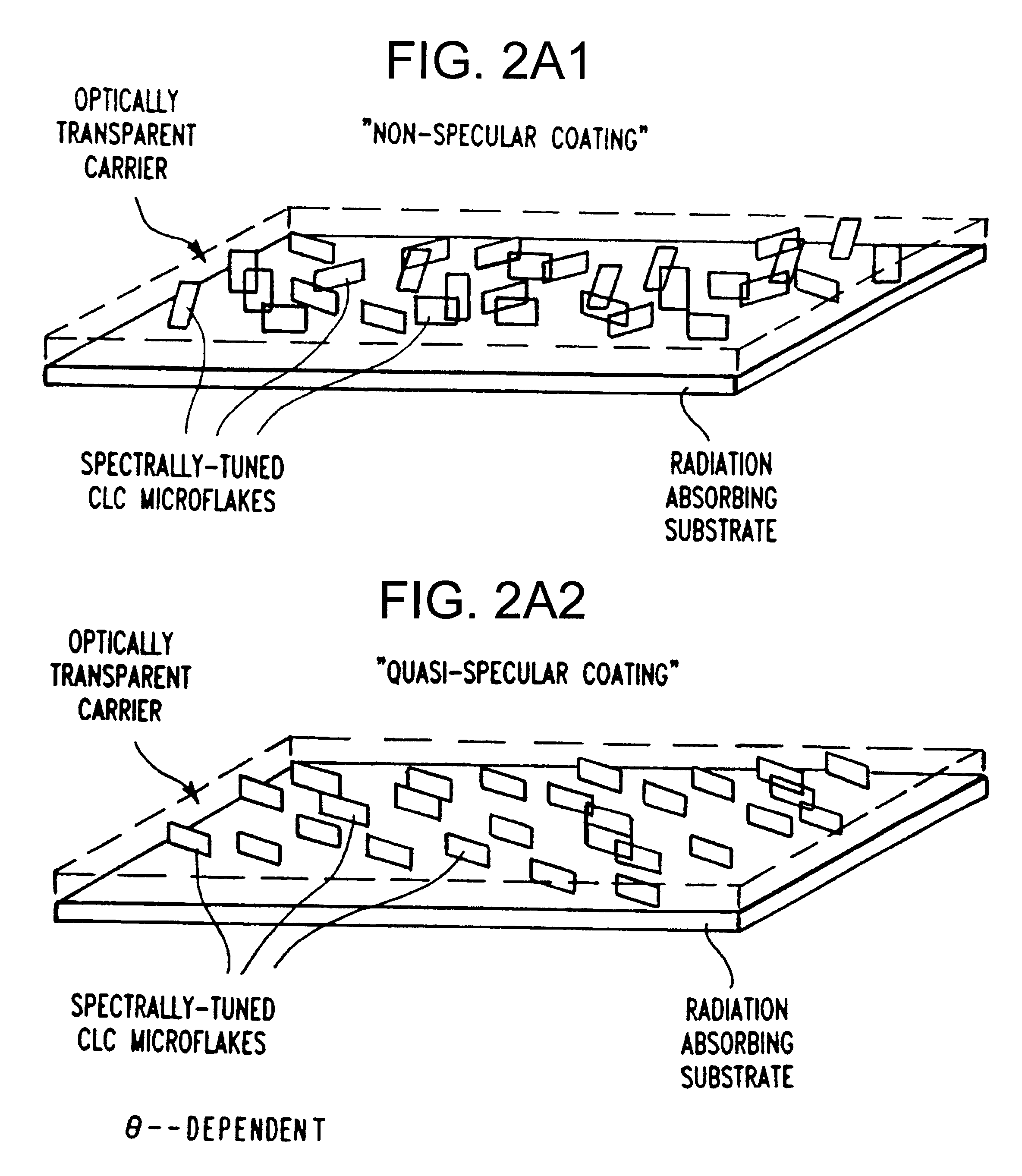Method and system for producing color images with improved brightness and color characteristics on radiation absorptive surfaces
a radiation absorption surface and color image technology, applied in the direction of door/window protective devices, polarising elements, instruments, etc., can solve the problems of not being able to achieve the high-quality 3-d stereoscopic image using prior art clc-based inks and pigments required by this stereoscopic display method, clc-based inks and paints, shortcomings and drawbacks, etc., to achieve the effect of improving brightness and color characteristics
- Summary
- Abstract
- Description
- Claims
- Application Information
AI Technical Summary
Benefits of technology
Problems solved by technology
Method used
Image
Examples
second embodiment
When the polymerizable liquid crystal film has attained a perfect planar texture on the surface-treated substrate, it is then ready to be cured through polymerization (i.e. cross-linking) of the polymerizable CLC material component of the applied film. In the CLC film fabrication process hereof, polymerization is achieved by exposing one surface thereof to UV light so that a non-linear intensity gradient is produced within the film. The UV intensity should be such chosen that a phase separation and molecular diffusion and redistribution of the non-cross-linkable compound is guaranteed before the completion of the polymerizable compound. After the polymerization seizes, a first sheet of broadband CLC polarizing film is obtained with "asymmetrical" polarization reflection characteristics over the whole visible range of the electromagnetic spectrum.
Substep (A6): Removing Substrate from the Cured Layer of Liquid Crystal Film
After the first sheet of liquid crystal film is cured, it is ne...
example 1
In this example, a method is described for fabricating broadband CLC circularly polarizing film material for use in making the CLC-based microflakes of the present invention. The red compound of CLC polysiloxane (CC4070L) mentioned above is blended with E31 nematic liquid crystal, also mentioned above. The red CC4070L has a left-handed twist sense and reflects at 690 nm when cured at 70.degree. C. The mixture contains E31 / CC4070L in a ratio of 1 / 2 by weight with 0.6% IG184 photoinitiator by weight. Photoinitiator IG184 is commercially available from Ciba Geigy, Hawthorne, N.Y. The mixture is introduced into a 20 micron glass cell and cured at an ultraviolet intensity of 0.047 mW / cm2 at a temperature, provided by a hot plate, of 92.degree. C. In this example, only the CLC polysiloxane material is polymerized while the nematic liquid crystal remains in the liquid state. After polymerization, spectral analysis of the resulting circularly polarizing film material was carried out on a Pe...
example 2
In this example, a method is described for fabricating broadband CLC circularly polarizing film material for use in making the CLC-based microflakes of the present invention. In this example, the blue compound of CLC polysiloxane (CC4039L) and nematic liquid crystal (E31) are mixed in a ratio of 2:1 by weight along with photoinitiator (IG184) of 0.6% by weight. A 20 micron glass cell is used to provide a film of that thickness. The CLC is cured by a UV lamp of 0.047 mW / cm2 at 92.degree. C. The resulting polarizing layer covered a spectral band pass from 370 nm to 1,200 nm providing a super bandwidth polarizer of 830 nm, covering the whole visible and near IR spectral band. As with Example 1, the liquid crystal material (E31) remains in the liquid state after curing. After polymerization (i.e. curing), spectral analysis of the resulting circularly polarizing film material was carried out on a Perkin-Elmer, Lambda 19 spectrophotometer. Both transmission and reflection spectra were tak...
PUM
| Property | Measurement | Unit |
|---|---|---|
| Thickness | aaaaa | aaaaa |
| Color | aaaaa | aaaaa |
| Structure | aaaaa | aaaaa |
Abstract
Description
Claims
Application Information
 Login to View More
Login to View More - R&D
- Intellectual Property
- Life Sciences
- Materials
- Tech Scout
- Unparalleled Data Quality
- Higher Quality Content
- 60% Fewer Hallucinations
Browse by: Latest US Patents, China's latest patents, Technical Efficacy Thesaurus, Application Domain, Technology Topic, Popular Technical Reports.
© 2025 PatSnap. All rights reserved.Legal|Privacy policy|Modern Slavery Act Transparency Statement|Sitemap|About US| Contact US: help@patsnap.com



